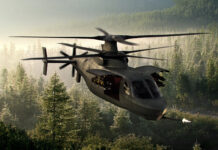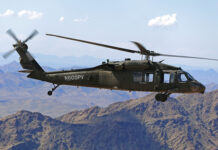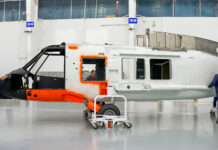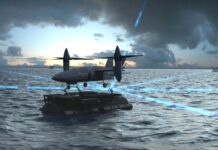Sikorsky and DARPA are working to dramatically improve flight safety and operations so humans and machines can work together more seamlessly in the field. Sikorsky is leading the way toward a future where aircraft can be operated with two, one or zero pilots at all times of the day or night and in a variety of complex scenarios. These include contested, congested and Degraded Visual Environments (DVE).
This technology suite already exists in Sikorsky’s S-70 Optionally Piloted Vehicle (OPV) BLACK HAWK and the Sikorsky Autonomy Research Aircraft (SARA), a modified S-76B helicopter. Developed under DARPA’s Aircrew Labour In-cockpit Automation System (ALIAS) and with the support of Sikorsky’s MATRIX™ Technology, pilots can focus on saving lives or transporting cargo instead of the mechanics required for contemporary flight.
In the Palm of Your Hand
This technology was recently tested in a first-of-its-kind mission, demonstrating complete supervised autonomy capabilities on the OPV. This included autonomous take-off, landing and two simulated obstacle avoidance scenarios, all completed with a tablet.
With ALIAS, there is the potential to transform how aviators and air crews execute their critical missions. Operators can fly their aircraft safely, reliably and confidently, even with reduced crew and limited visibility. From takeoff to landing, ALIAS and MATRIX left little work to be done by the pilots on board during the test. Accompanied by a safety pilot, chief pilot Mark Ward commanded the supervised autonomous mission using only a tablet. As expected, the OPV turned and manoeuvred its way through the simulated obstacles as they appeared on the tablet screen.
Managing highly sophisticated equipment while maintaining situational awareness across multiple domains – most of which you can’t see – is taxing. ALIAS and MATRIX will improve operator decision aiding for manned operations while also enabling both unmanned and reduced crew operations in increasingly complex future mission scenarios. This game-changing innovation has the power to transform how Army aviators and air crews execute their critical missions.
RAIDER X® is Sikorsky’s offering for the US Army’s Future Attack Reconnaissance Aircraft (FARA). DEFIANT X™ is the Sikorsky-Boeing team’s solution for the Army’s Future Long-Range Assault Aircraft (FLRAA). Sikorsky will continue to develop and transition its pilot-direct autonomy capabilities under Phase III of the DARPA ALIAS programme through 2022. At the same time, Lockheed Martin will continue to invest in the development of optionally-manned and unmanned systems that serve as force multipliers for customers around the world.
Jack Richardson











